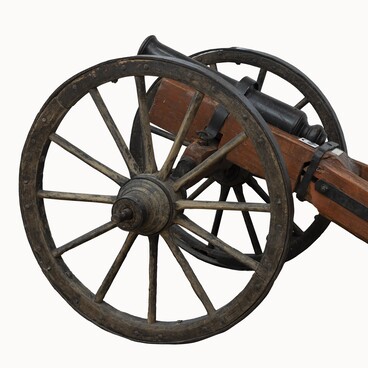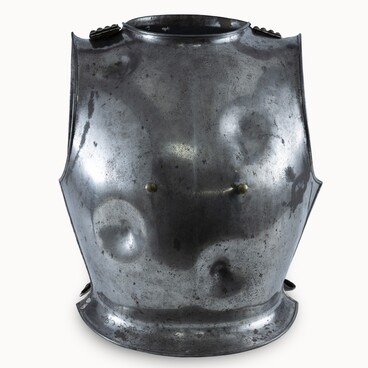In the 19th century, along with combat bladed weapons, protective armor items — cuirasses — were made at the Zlatoust Arms Factory. The unique production began in 1836. Cuirasses were in service with the heavy cavalry of European armies.
The Zlatoust City Museum of Local Lore exhibits a cuirass, which was made at the Zlatoust Arms Factory in the 1840s for officers of the Life Guards of the Cavalier Guard Regiment.
The regiment was formed in the Russian army in 1800 as a successor of the company (and the corps) of cavalry guards. Since 1804, the regiment had its own orchestra of 25 musicians. The cavalry guards had their combat debut in November 1805 during the battle of Austerlitz. The battle cost the regiment a third of its officers and 226 lower ranks.
The armor from the museum’s collection was designed by the famous Russian mining engineer and metallurgist Pavel Petrovich Anosov. It was made by stamping. The cuirass consists of front and back parts, connected by shoulder straps. The straps are covered with decorative copper plates — the so-called “scales”.
The front surface of the armor was covered with black lacquer. In the center of the front part of the steel breastplate, there is a chased eight-pointed star of the Order of St. Andrew the Apostle the First-Called with the monogram “A” below the imperial crown. That was the first order established in Russia; it was considered the highest honor in the Russian Tsardom and later in the Russian Empire.
Later, in the second half of the 19th century, Russian cuirasses were repeatedly modified; their shape, design, and material were improved. As part of the dress uniform, cuirasses were used in four regiments of the heavy cavalry of the Life Guards of the Russian Empire up until 1917.
The Russian cuirasses made of premium steel were not only of a quality equal to their foreign-made analogs but often surpassed them in performance. Along with cuirasses, steel uniform helmets for cuirassiers were also made in Zlatoust.
The Zlatoust City Museum of Local Lore exhibits a cuirass, which was made at the Zlatoust Arms Factory in the 1840s for officers of the Life Guards of the Cavalier Guard Regiment.
The regiment was formed in the Russian army in 1800 as a successor of the company (and the corps) of cavalry guards. Since 1804, the regiment had its own orchestra of 25 musicians. The cavalry guards had their combat debut in November 1805 during the battle of Austerlitz. The battle cost the regiment a third of its officers and 226 lower ranks.
The armor from the museum’s collection was designed by the famous Russian mining engineer and metallurgist Pavel Petrovich Anosov. It was made by stamping. The cuirass consists of front and back parts, connected by shoulder straps. The straps are covered with decorative copper plates — the so-called “scales”.
The front surface of the armor was covered with black lacquer. In the center of the front part of the steel breastplate, there is a chased eight-pointed star of the Order of St. Andrew the Apostle the First-Called with the monogram “A” below the imperial crown. That was the first order established in Russia; it was considered the highest honor in the Russian Tsardom and later in the Russian Empire.
Later, in the second half of the 19th century, Russian cuirasses were repeatedly modified; their shape, design, and material were improved. As part of the dress uniform, cuirasses were used in four regiments of the heavy cavalry of the Life Guards of the Russian Empire up until 1917.
The Russian cuirasses made of premium steel were not only of a quality equal to their foreign-made analogs but often surpassed them in performance. Along with cuirasses, steel uniform helmets for cuirassiers were also made in Zlatoust.







